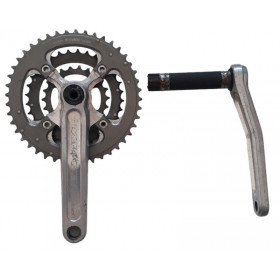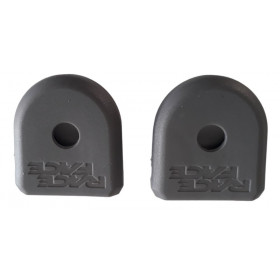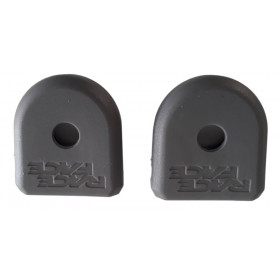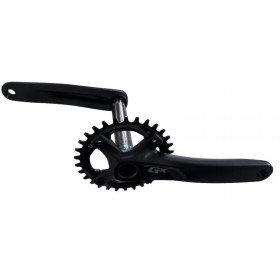-
 UsedRace Face Deus XC crankset 175 mm triple
UsedRace Face Deus XC crankset 175 mm triple- €24.99
-
 New product -60%Carbon cranks boot Race Face grey
New product -60%Carbon cranks boot Race Face grey- €6.00
- €14.99
-
 New product -60%Carbon cranks boot Race Face Sram Shimano grey
New product -60%Carbon cranks boot Race Face Sram Shimano grey- €6.00
- €14.99
-
 New product -31%Sram gx 1000 X-SYNC crankset fat bike gxp 11s 30 teeth
New product -31%Sram gx 1000 X-SYNC crankset fat bike gxp 11s 30 teeth- €106.25
- €153.99
Showing 1-4 of 4 item(s)
A crankset on a freeride mountain bike fulfills several important functions and has specific characteristics adapted to this style of riding. Here is a detailed description of its function, its characteristics and the associated standards:
Function :
1. Transfer of pedaling power:
The crankset is responsible for transmitting the rider's pedaling power to the bike's wheels, helping propel the mountain bike forward.
2. Compatibility with a variety of terrains:
A freeride mountain bike crankset should be designed to perform effectively on a variety of terrain, including steep descents, jumps, tight turns, and technical sections. It must therefore be robust enough to withstand shocks and high stresses.
Features :
1. Strength and durability:
Freeride mountain bike cranksets are generally built with robust and durable materials such as forged aluminum or reinforced carbon, in order to withstand the extreme stresses encountered when freeriding.
2. Impact protection:
Some freeride mountain bike cranksets are equipped with additional protection, such as aluminum or plastic plates, to protect the chainrings and cranks from bumps and impacts when jumping or descending on rocky terrain.
3. Number of trays:
Freeride mountain bike cranksets can be equipped with one, two or three chainrings, depending on the rider's preferences and the nature of the terrain they are riding on. Single chainring setups are becoming more and more popular in freeriding due to their simplicity and reliability.
4. Compatibility with chains and bottom brackets:
Freeride MTB cranksets must be compatible with MTB-specific chains and bottom brackets, ensuring smooth and reliable operation of the entire drivetrain.
Standards:
1. Bottom bracket interface:
Freeride MTB cranksets are available with different bottom bracket interfaces, such as the ISIS standard, the Octalink standard or the Hollowtech II standard. It is important to choose a crankset that is compatible with the bottom bracket interface of your mountain bike frame.
2. Size of trays:
Freeride MTB cranksets are available with different chainring sizes, usually expressed in number of teeth. Chainring sizes can vary depending on the rider's preferences and the type of terrain they are riding on.
In summary, a freeride mountain bike crankset is a crucial component that ensures the efficient transmission of the rider's pedaling power to the bike's wheels, while providing the strength and durability necessary to withstand the extreme stresses encountered when freeriding. . With specific features such as strength, impact protection and compatibility with chains and bottom brackets, it's important to choose a crankset that suits your freeride needs and riding style.
